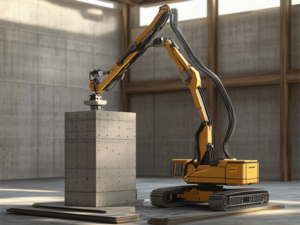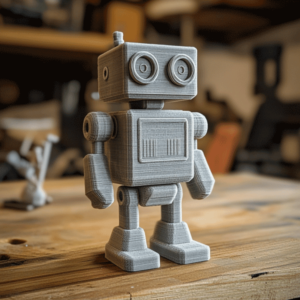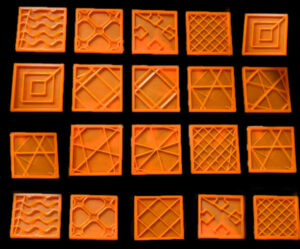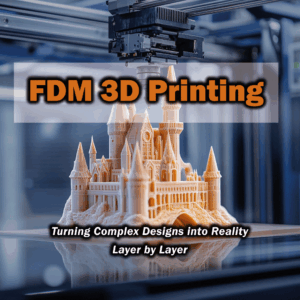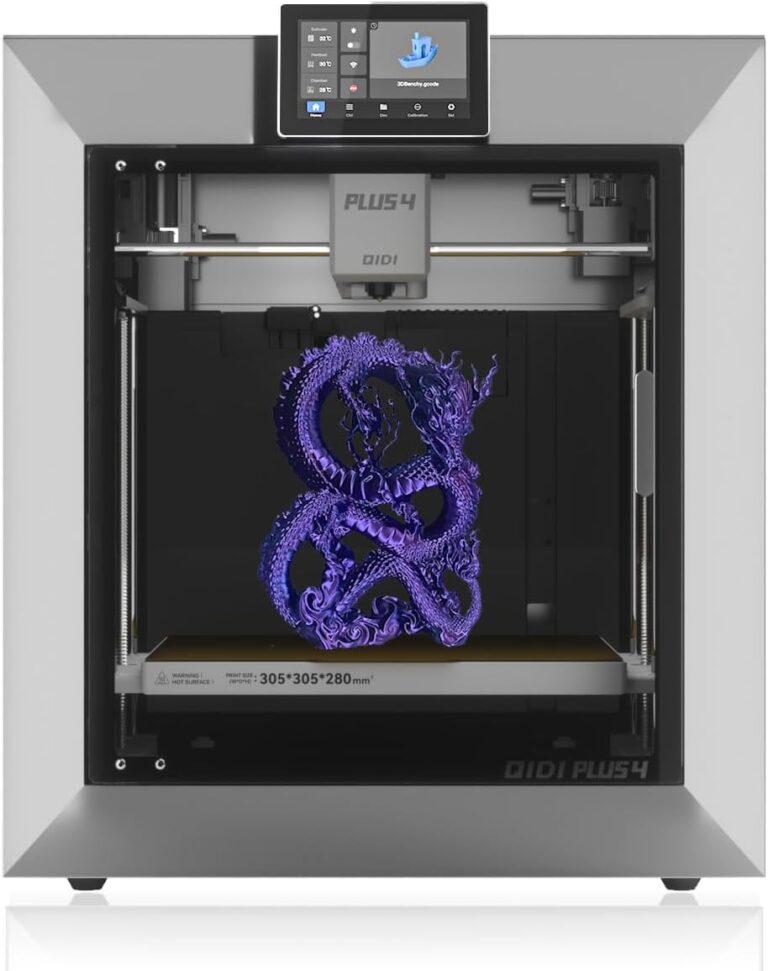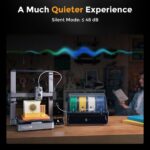QIDI X-MAX 3 3D Printer Review: Speed, Volume, and Precision Combined
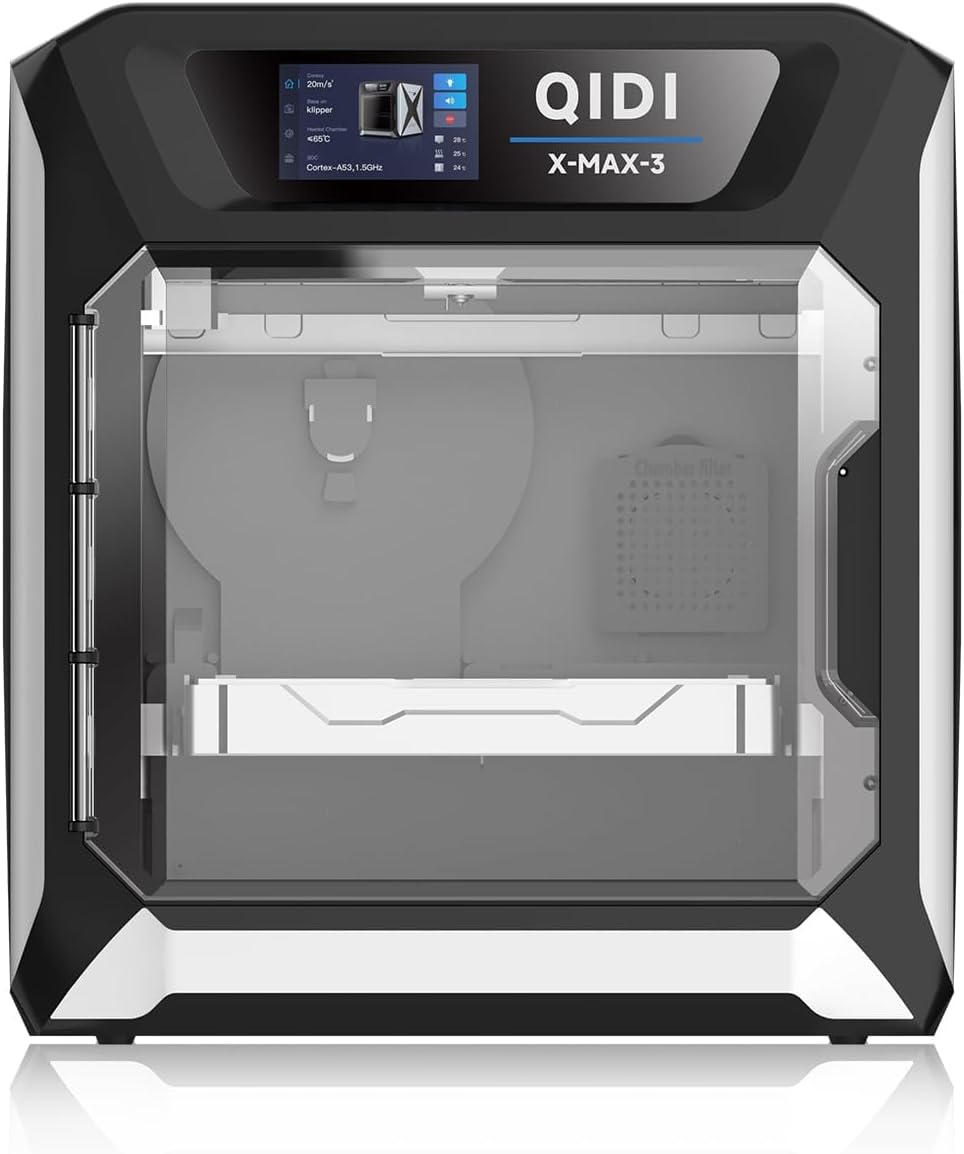
Interested in the QIDI X MAX 3?
(As an Amazon Associate, I earn from qualifying purchases, at no extra cost to you. This helps support the blog.)
Meet a true game‑changer in the 3D‑printer arena: QIDI X MAX 3 (or, simply, QIDI MAX3) — a machine that speaks to both first‑timers and seasoned pros thanks to its 600 mm/s super‑print speed, expansive build volume, and features geared toward industrial‑grade quality. In this guide we’ll unpack every technical detail straight from the printer’s Amazon page (no contradictions, promise!) in a reader‑friendly way. We blend the cozy voice of a blog post with the depth of a full‑on product review. So, whether you’re hunting for your very first 3D printer, looking to level‑up a growing workshop, or running a professional production line, you’ll discover what the QIDI X MAX 3 brings to the table — peppered with real user feedback, review videos and social‑media buzz. Expect spec tables, tip‑flagging icons, and stylised headings along the way for an easy, enjoyable read.
🚀 Overview & Stand‑Out Features
QIDI X MAX 3 is one of the most advanced CoreXY 3D printers on the market, melting blazing speed and generous volume in the same crucible. The roomy build space lets you pump out large prototypes in a single pass or batch‑print smaller parts all at once. Coupled with Klipper firmware and beefed‑up hardware, this unit is tuned for top‑tier performance the moment it leaves the box.
⚡ 600 mm/s Super Print Speed – The print head can race up to 600 mm/s, backed by a jaw‑dropping 20 000 mm/s² acceleration. Translation: marathon‑length jobs shrink to sprint times. (These are ceiling numbers showing hardware muscle; real‑world speeds get dialed in to suit model detail and material.)
📏 Large Build Volume (325 × 325 × 315 mm) – Roughly 12.8″ × 12.8″ × 12.4″, giving you room for hefty prototypes or a grid of smaller parts in one go. The fully enclosed frame means you can actually use every last cubic millimeter.
🤖 Klipper Firmware + CoreXY Architecture – Ships with Klipper out of the gate. Pair that with CoreXY motion and you unlock Input Shaping, Pressure Advance and other pro‑level tweaks that keep corners crisp even at break‑neck speed.
🔄 Automatic 64‑Point Calibration – A smart leveling system scans 64 spots across the bed, senses tiny height differences and fixes them at the touch of a button. Newcomers? Manual shim‑fest avoided. First print prepped in minutes.
🔥 65 °C Heated, Sealed Chamber – The enclosure can warm the air to 65 °C — perfect for ABS, ASA, or nylon that hates drafts. A steady thermal bubble slashes cracking and warping.
🏗️ Ultra‑Rigid Metal Frame – A 6 mm hardened‑aluminum bed, 10 mm belts, and Ø 10 mm steel rails team up for a rock‑solid motion system. Less vibration, longer life, fewer tune‑ups — QIDI even claims a “lifetime” design.
The highlights above already set X‑MAX 3 apart; but dig a little deeper and you’ll find even more wins in print quality, software finesse, and user experience.
Productivity Through a Giant Build Volume
That 325 × 325 × 315 mm cavern isn’t just for show. Print a bulky prototype housing in one piece, or duplicate smaller parts in a tidy grid and save hours of machine time. For pros and small businesses, that means faster prototyping and leaner production cycles; for hobbyists, it’s simply more objects per print. The fully enclosed, heated chamber keeps temperatures even, so even big jobs stay warp‑free and sharp.
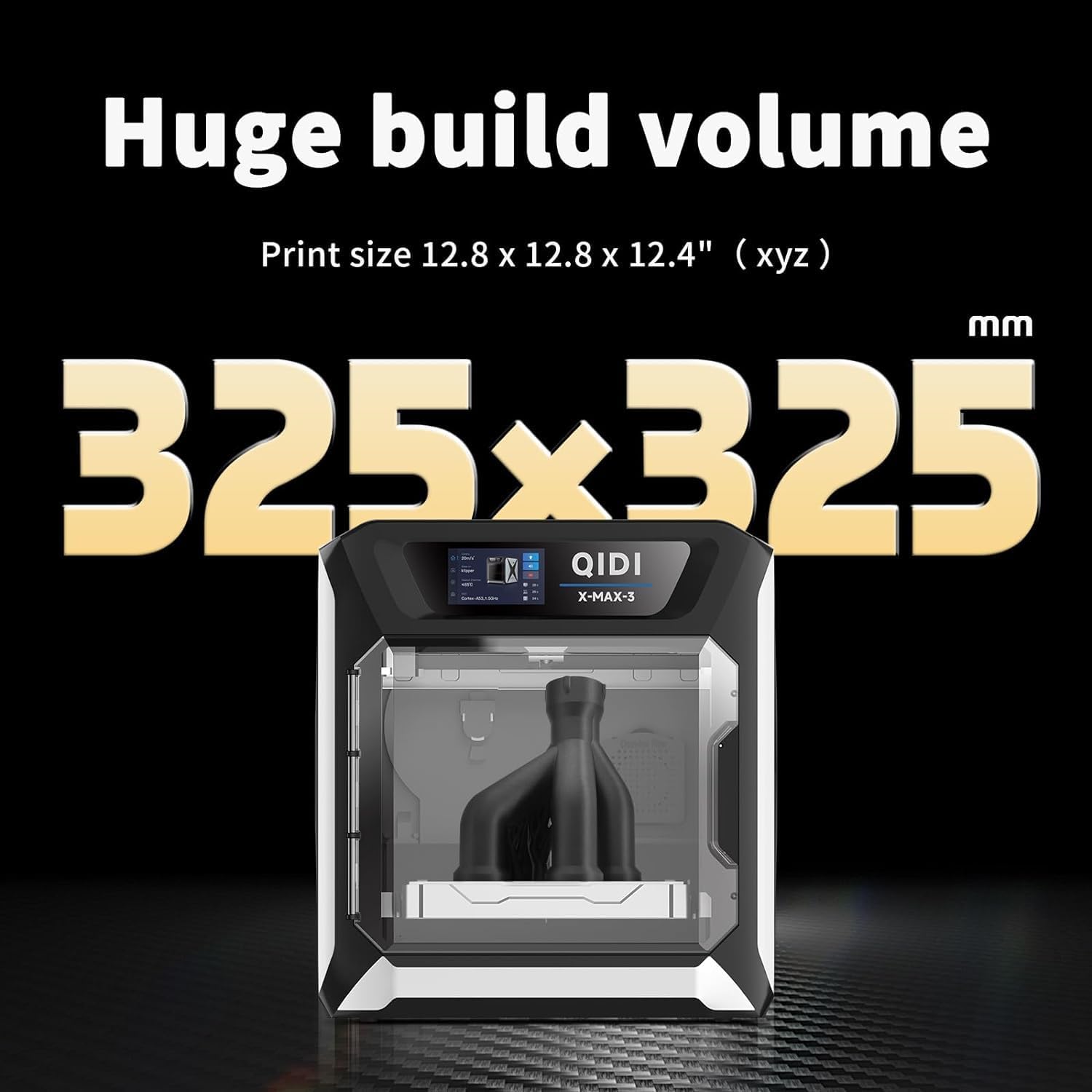
📊 Technical Specifications Table
Below is a condensed look at the QIDI X MAX 3’s core specs. Every figure mirrors the official numbers on Amazon, so what you see is exactly what you get:
| Feature | QIDI X MAX 3 (MAX3) |
|---|---|
| Printing Technology | FDM (Fused Deposition Modeling) – CoreXY kinematics |
| Build Volume (X × Y × Z) | 325 × 325 × 315 mm (12.8″ × 12.8″ × 12.4″) |
| Max Print Speed | ≤ 600 mm/s (20,000 mm/s² acceleration) |
| Dimensional Accuracy | ± 0.1 mm (high precision) |
| Layer Resolution | 0.05 – 0.4 mm (adjustable) |
| Nozzle Diameter | 0.4 mm installed (0.2, 0.6, 0.8 mm optional) |
| Extruder Type | Direct-drive, high-flow extruder |
| Extruder Temp | ≤ 350 °C (for specialty filaments) |
| Bed Temp | ≤ 120 °C – heated glass/steel plate, dual-sided flexible magnetic surface (3djake.com) |
| Enclosure Heater | Yes, independent chamber heating up to 65 °C |
| Material Support | PLA, ABS, ASA, PETG, TPU, PC, PA/Nylon, CF/GF-reinforced filaments |
| Filament Diameter | 1.75 mm |
| Filament Sensor | Yes (run-out warning) |
| Auto-Leveling | Yes, 64-point mesh bed leveling |
| CPU & Firmware | 64-bit Quad-Core (Cortex-A53 1.5 GHz, 1 GB RAM) – Klipper on Linux |
| Touch Screen | 5.0 in color (800 × 480) |
| Connectivity | Wi-Fi (2.4 GHz), Ethernet, USB drive (3djake.com) |
| Supported Slicers | QIDI Print (QIDIslicer, PrusaSlicer fork), Cura, Simplify3D, PrusaSlicer, etc. |
| Machine Dimensions | 553 × 553 × 601 mm |
| Weight | ~ 30.2 kg |
| Warranty & Support | 1-year official warranty; lifetime tech support (response < 12 h) |
The numbers paint a vivid picture: with a 350 °C hot end and a 65 °C heated chamber, this thing doesn’t stop at run-of-the-mill PLA/ABS—it chews through engineering-grade polymers, too. Toss in Klipper and you’re looking at a printer that’s endlessly tweakable and OTA-friendly. Oh, and remote control over Wi-Fi or Ethernet? Absolutely.
🏗️ Design and Build Quality
Visually, the QIDI X MAX 3 strikes a modern, purpose-built stance. The fully enclosed shell—complete with a clear front door and top panel—lets you keep an eye on every layer. Just remember: at roughly 55 × 55 × 60 cm, it claims serious bench real estate. Users report shipping boxes tipping the scales at ~38 kg, so grabbing a buddy for unboxing is wise.
Chassis & Frame. A metal-alloy body, 6 mm-thick aluminum plate, dual Z-screws, and beefy belts all add up to rock-solid mechanics. Translation: fewer vibes, happier parts, and a frame that’s built to outlive your caffeine habit. Reviewers swear it feels bulletproof right out of the crate.
Motion System. CoreXY is the secret sauce behind those headline speeds. By crossing the belts on X and Y, the print head stays nimble while the heavier stuff stays put—perfect for fast, stable moves. QIDI reinforces the setup with dual Z-leads, eliminating droop on tall or hefty prints.
Extruder & Cooling. The direct-drive unit shines with flexibles—TPU feeds smoothly without spaghetti moments. Twin fans handle business: one chills the fresh layer, the other keeps the hot end electronics comfy. Expect crisp bridges and sharp overhangs, even when you’re flirting with speed limits.
Bed & Calibration. A magnetic, pop-off plate that’s usable on both sides? Don’t mind if we do. Pick the gritty face for ABS grip or the smooth side for PLA shine. The 64-point auto-level mesh maps the bed’s quirks and irons them out on the fly. Users say it’s a five-minute setup—QIDI even claims “print in ten.” Bold, yet believable.
⚡ Speed Demon
Hitting 600 mm/s isn’t just marketing bravado. Klipper’s Input Shaping tames ringing and ghosting, while Pressure Advance keeps corners crisp by dialing in filament flow. Bottom line: you get break-neck speed without turning your models into abstract art. In pro reviews, the X-MAX 3 often punches above its weight, serving up layers so tidy you’d swear it was running half the speed.
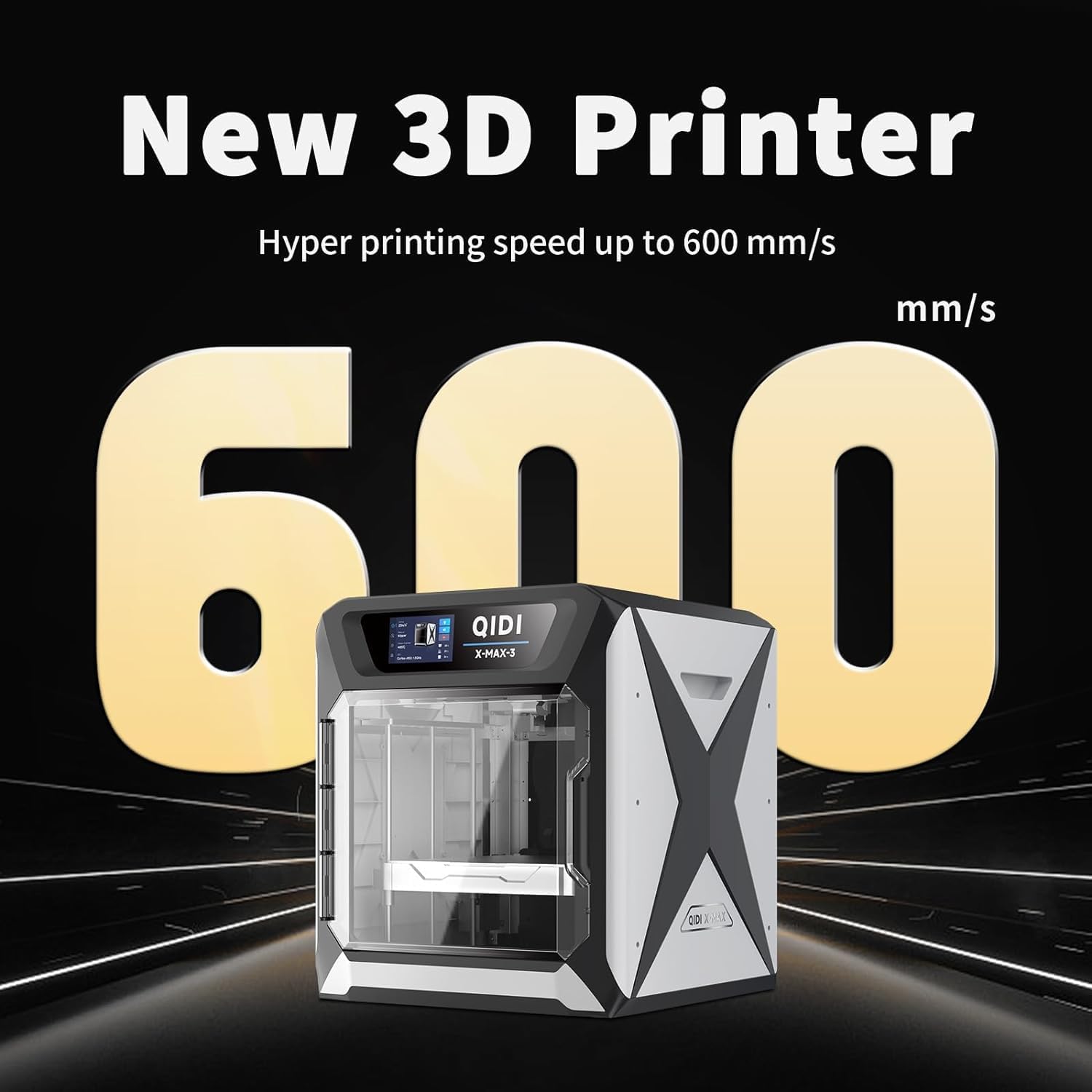
Check Price & Learn More on Amazon
(As an Amazon Associate, I earn from qualifying purchases, at no extra cost to you. This helps support the blog.)
🎮 Software & User Experience
The QIDI X MAX 3 comes with its own on-board computer (an ARM-based SoC) running Klipper firmware, essentially turning the printer into a tiny server. You can log in over your network, push G-codes, or—even cooler—plug in a USB webcam and keep an eye on the build from the couch. QIDI bundles a slicer called QIDI Slicer / QIDI Print—a tailored fork of PrusaSlicer—so the interface feels familiar and feature-rich. Factory-tuned profiles for the QIDI X-MAX 3 mean even first-timers hit “Print” with the right settings baked in.
The front-mounted 5-inch color touchscreen is friendly and snappy. Loading filament, kicking off a job, or launching a 64-point mesh bed-level routine is three taps away. Because Klipper sits underneath, the UI isn’t stuck on “basic”—dive into advanced menus for network tweaks, speed presets, or live temperature graphs whenever you like. On Wi-Fi you can reach the printer from any PC or phone on the same LAN, and if you’d rather a rock-solid link, the Ethernet jack has your back—handy when a workshop runs a farm of machines.
Remote monitoring is doable via an optional USB camera (about $40). Once hooked up, QIDI Slicer—or any Klipper dashboard such as Fluidd or Mainsail—streams video so you can babysit that 30-hour print without hovering over the build plate. Documentation is a tad thin, and a few owners admit to a bit of trial-and-error, yet Reddit threads and maker forums confirm the setup works once dialed in.
On the software side, multiple languages are supported (English, Chinese, and a growing list), though Turkish hasn’t shown up yet. Firmware updates land over the air; click “Update” and the printer flashes itself in minutes. Because Klipper is open source, tinkerers can hack in macros, custom GUIs, or exotic motion tweaks that closed-source rivals simply won’t allow.
QIDI ships a solid printed manual plus the usual toolkit. Beginners find the quick-start wizard enough to get rolling, but total newcomers to 3D printing may still want a YouTube binge or a mentor on call—3D printing has a learning curve, after all. Luckily, QIDI’s tech support is legendary: users rave about sub-12-hour email answers and replacement parts that arrive before the frustration sets in.
🧵 Filament Compatibility & Print Quality
Broad material support is the headline. Out of the box the 0.4 mm brass nozzle handles PLA, ABS, PETG, TPU, and ASA with ease. Crank the hot end to 350 °C and you’re clearing the runway for PC, Nylon, PA-CF, PA-GF, and other engineering filaments. Abrasive blends will chew up brass, so QIDI includes—or at least offers—a hardened-steel nozzle for the rough stuff.
Keeping hygroscopic materials bone-dry, QIDI bundles a filament dry-box that pipes the spool straight to the extruder. No extra gadget on the bench, no mid-print moisture woes—just consistent, crisp layers whether you’re printing Nylon gears or TPU phone cases.
Print-quality reports are glowing. Reviewers cite tight layer lines, clean bridges thanks to the twin fans, and rock-solid dimensional repeatability at ±0.1 mm. Sure, you’ll still tweak Z-offsets or wipe the plate when switching filaments—one user mentions a stubborn PLA color that needed a re-level and fresh glue stick—but once dialed, the Qidi X MAX 3 delivers professional-grade parts fast. Community profiles on Reddit make those last 5 % tweaks a breeze.
👍 User Feedback & Real-World Experiences
Technical specs on paper only tell half the story; the rest comes from the folks who actually put a machine through its paces. Since launch, the QIDI X-MAX 3 has drawn plenty of attention, and users haven’t been shy about sharing their impressions online. Sporting a solid 4.4 / 5 average rating on Amazon, the printer earns mostly upbeat reviews. Here’s a sampler of what people are saying:
✅ Print Quality & Speed: Many owners rave about the crisp results the X-MAX 3 delivers—even when they crank the speed dial up. One Redditor put it this way: “Given everything the X-MAX 3 brings to the table, it’s a steal. I ran nylon on mine and the finish blew me away.” A seasoned hobbyist echoed that sentiment, noting the machine’s performance holds its own against fast rivals like the Bambu Lab and Creality K1 while still offering a roomier build volume.
✅ Durability & Reliability: Long-time users tip their hats to the printer’s sturdiness and marathon stamina. Posts in Facebook 3D-printing groups describe the QIDI X MAX 3 pumping out parts for hours—sometimes days—without a hiccup. A few small-business owners even run it like a mini production line for low-volume batches.
✅ Customer Support: QIDI’s help desk has practically reached legend status. Amazon reviewers gush, calling it “the BEST customer service in the 3D-printer world!” One buyer recalls a sensor issue on day one; QIDI’s tech team shipped a replacement part almost immediately and kept the conversation warm and friendly throughout. Reddit threads back that up: “Their support crew is insanely patient and helpful—time-zone gaps or not, they fix everything,” writes another user. For pros who view a printer as an investment, knowing there’s a squad at the ready is huge.
✅First Impressions (Beginners): Even though the X-MAX 3 is a pretty high-end machine, its straightforward interface and self-tuning features let absolute newbies pull off successful prints. That said, more than a few first-timers confess they hit a learning curve in the opening days: wrapping their heads around terms like input shaping or pressure advance and digging into the slicer’s advanced tweaks can take a minute. One owner summed it up nicely: “I bought the QIDI X MAX 3 as my very first 3D printer; it looked scary at first, but after a couple of test runs I got the hang of it and I’m cranking out gorgeous parts now.” Bottom line? The richer the feature set, the more you appreciate it as you grow—you keep uncovering new tricks and understanding what the machine can really do.
⚠️ Potential Drawbacks and Fixes: No product is flawless, and X-MAX 3 owners do point out a handful of quirks. First up is the missing built-in camera—at this price, some feel one should come in the box, though popping on an external cam solves it. Fan noise is another gripe: during long prints, the steady hum can wear on you. The CoreXY motion is fairly quiet, but the hot-end and circulation fans stay active, so there’s always a background drone; parking the printer in a separate room or adding acoustic foam usually calms things down. Finally, sheer bulk and weight are a hassle if your workspace is tight—getting the X-MAX 3 to fit (or lifting it solo) isn’t exactly fun. Still, most see these downsides as small next to the upside. As one reviewer laughed, “Sure, it’s huge and heavy, but you can’t expect a printer with this build volume and feature list to weigh as much as a toaster.”
Pro tip: Join the community! Reddit’s r/QIDI, r/3Dprinting, plus Facebook groups are gold mines for slicer profiles, troubleshooting, and mods—saving you hours of solo tuning.
Final Thoughts: The QIDI X MAX 3 melts speed, build volume, and razor-sharp accuracy into one formidable package—one of those rare printers that keeps hobbyists grinning and meets pro-shop standards. If you’ve got room on the bench and wiggle room in the budget, snagging this beast now means you’ll have a rock-solid workhorse cranking out parts for years to come.
💡 Amazon Deal: Wrapping up, if you want to eyeball the X-MAX 3—or smash that Buy Now button—hit the Amazon link below. Check the live price, browse the customer Q&A, and watch for flash promos; every so often there’s a free-filament bundle or a coupon that’s just too good to miss.
🛒 Explore & Order the QIDI X-MAX 3 on Amazon – grab this high-speed, large-volume, industrial-grade printer with Amazon’s quick shipping and hassle-free returns, and it could be humming on your desk in no time. Happy printing!
Interested in the QIDI X MAX 3?
If you’re considering purchasing the QIDI X-MAX 3 3D Printer, you can check its current price and availability on Amazon through the link below.
Affiliate Disclosure: Please note that the link below is an affiliate link. This means if you click on the link and make a purchase, I may earn a small commission at no extra cost to you. This commission helps support the blog and allows me to continue creating detailed reviews and helpful content like this. Your support is genuinely appreciated!
Check Price & Learn More on Amazon
(QIDI X-MAX 3 3D Printer)
References
QIDI Technology. (n.d.). QIDI Technology.
Maker Forums. (n.d.). Qidi X-Max 3 first impressions.
Reddit. (n.d.). Reddit.


